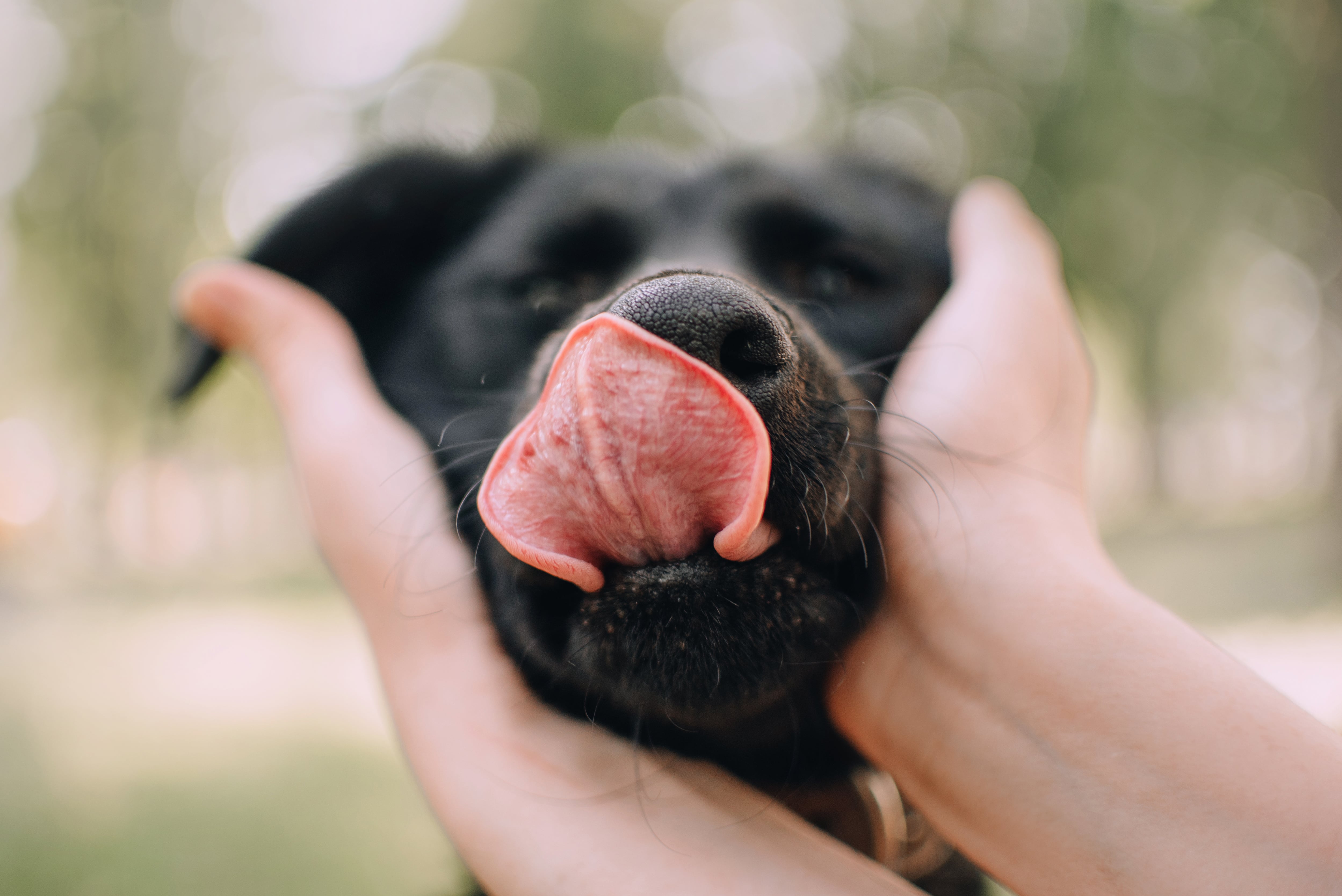November 8, 2022
Dog noses a sign of health: Myth or Fact?
As a vet working in clinical practice for over 30 years, I have learned just how common the myths are surrounding a dog’s nose. Should it always be wet and cold? If it’s dry is my dog sick? This is probably one of those questions that bother dog owners but never even cross the vet’s mind!
Dogs are omnivores (eat meat and vegetable) but have mainly carnivore characteristics. One of those characteristics is having a nose that is naturally colder than a warm room temperature. This difference is important allowing carnivores to detect radiating heat from their prey, assisting in the hunt. In a cold area, a dog’s nose will likely be several degrees warmer than the air temperature (they usually only cool to about 8 degrees centigrade) so might feel warmish to the touch of a cold human hand. As a general rule of thumb, if your pet is bright and alert then whether the nose feels cold or hot, wet or dry, it is a very unlikely indicator of illness or disease. If the dog is dull and depressed and generally hot to the touch with a dry nose then, absolutely, it would be wise to seek veterinary attention in case there’s a genuine fever or he/she is dehydrated. Heat stroke is a life-threatening condition that would present like this – dry hot nose in a dull collapsed animal: clearly an emergency. Most dog noses are damp, a condition which helps them trap particles from the environment (much like a damp cloth collects dust easily) thus aiding scent detection.
Signs of Disease or Illness
So, if heat/dryness are unlikely indicators of disease, should we ignore our pet’s nose? Of course not: there are many things an examination of the nose can tell us about illness/health.

Pigment change
Dogs, and especially cats, with naturally unpigmented noses are prone to sun damage just like our skin is. In the short term, they can get sunburned, but especially in cats which are natural sunbathers, these repeated sun-damaged areas can develop nasty skin cancer. The same is true of white ear tips in both dogs and cats. Unpigmented nose and ears should be protected with pet/child-friendly sunblock (at least SPF 30) applied before any sunny periods (if we ever get any here!). If your pet has a crusty area on the nose/ear tip then early intervention can be a real life-saver so do make an appointment with your vet before, heaven forbid, it may spread into the nodes.
Nasal Discharge
A runny nose, whilst particularly common in people, is actually quite unusual in dogs and cats. Cat flu (normally covered by routine vaccination) can cause sneezing and a flu-like upper respiratory infection but more sinister causes of a discharge may include tumors so a trip to the vet may be wise if your cat’s nose runs. Nasal discharges in dogs can have very many causes. I haven’t seen Canine Distemper in NI for years but certainly, have in Africa where vaccination is much less common than here. Fungal infections, allergies, tumors, and of course foreign bodies lodged up the nose are all possible causes. Runny noses should never be ignored if present for more than a few days. Your vet may need to perform several investigations to diagnose these cases, but most can be helped if treated early.
Blisters/vesicles on the nose
Insect/nettle/jellyfish stings can all present with blisters, and a very itchy nose. Mild cases can be easily settled by cool washes with water (seawater if jellyfish), but if irritation persists, again a vet trip may be warranted.
When I was in University at Vet School we were shown pictures of a Jack Russell Terrier whose nose was covered in Ringworm fungus: he had a habit of “playing football or head-ball” with a hedgehog in his garden. The hedgehog spikes had damaged the skin on his nose and the Ringworm the hedgehog carried had infected the dog: Hedgie-Karma. I have yet to see my first live case of this though….

Cracking/fissures developing
Older dogs, especially Spaniel breeds, often develop a massive thickening of the nose (and feet pads) with a condition called hyperkeratosis – special balms applied daily can help ameliorate the discomfort the fissures/crack cause, otherwise, it often needs no treatment.
Depigmentation
A relatively uncommon problem in dogs happens when dogs’ skin/nose leather is in contact with some plastics. They can depigment these areas and this is thought to be vitiligo, which is a cosmetic issue only and needs no treatment. One thing to check is that there are no pustules/spots present as these could indicated that the depigmentation may be associated with a bacterial infection rather than vitiligo. Some breeds (like Huskies) also depigment naturally, a condition termed “Snow Nose! and this is of no clinical consequence. As a general rule of thumb, if there is no irritation or pain with nasal depigmentation then it is unlikely to be clinically important, but if there is any issue then do see your vet.
Small (inadequate) nostrils
I don’t have space in this article to tackle this very contentious issue properly. Brachycephalic dogs, cats, and rabbits are those with flattened “squashed-up” faces. Many of these animals lead excellent, good-quality lives, but far, far too many are trapped behind inadequate airways, unable to easily draw air in through their noses, which all animals prefer to do. Forced to struggle, and mouth-breathe on occasions these animals may be suffering. The extra pressures involved in normal breathing in these pets can distort the soft tissues at the back of the throat and in their voice boxes, requiring surgery to relieve the obstruction. If your pet has very small nostrils please have a full vet assessment to see if surgery might improve things. Early intervention can prevent the massive deterioration we see in older pets whose airways have been struggling for too long. Do also keep these pets slim and cool at all times: they are very, very prone to heatstroke and to sudden life-threatening deterioration with their breathing.

So, the take-home message as always when owning or caring for a pet: keep a watchful eye on every aspect of your pet, including his/her nose, and if you have any concerns do contact your vet for advice. All vets would much prefer to be able to reassure pet owners than to have a delay and end up in a critical health situation.
Disclaimer: This article cannot substitute for treatment decisions based on a full history and clinical examination by your vet.

Meet Veterinary Surgeon Craig:
Craig Reilly BVM&S CertSAM MRCVS Veterinary Surgeon
I love my job. I have been a vet in my hometown for most of my 35 year career: a great privilege.
I can remember my first dog so well. She was a wee rescue Labrador who sadly died of Canine Distemper Virus within a few days of us bringing her home from the shelter. I saw more cases of Distemper again when doing charity work in Africa recently, and am so grateful that here most owners are responsible and vaccinate their dogs regularly so we no longer see cases at home.
I qualified with distinction in Medicine from the Dick Vet College, Edinburgh in 1987. In 2002, I was the first vet in Northern Ireland to successfully complete the post-graduate RCVS Certificate of Small Animal Medicine, gaining a deep insight into how an ideal diet positively influences health of our pets, but highlighting the risks some of the fad diets bring.
I have always had pets, growing up and with my own family: I cannot imagine life without these fantastical loyal and loving companions.



